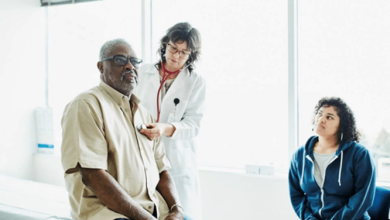Abortion and Black America: Disparities in Access, Risks and Changes to State Law


Abortion and Black America: Disparities in Access, Risks and Changes to State Law
Access to Abortion: State by State Infographic
Abortion, whether medical or surgical, is a safe and incredibly common way to end a pregnancy, is a procedure that Black women are up to four times more likely to get. Though there are many contributing factors to this gap, some of the more common ones include:
- Less access to contraceptives
- Disparities in income
- Greater risk for dangerous complications during pregnancy
You see, Black women are 2.9 times more likely to die during childbirth than their White counterparts. What this means is that the recent overturning of Roe v. Wade will undeniably have a disproportionate impact on Black women around the country.
In addition to more likely seeking abortions, more Black women live in states that restrict or ban abortion. They will either be forced to carry these unwanted pregnancies to term, risk getting caught while getting one in a safe haven state or risk the dangers and hardships of seeking non-legal abortions.
The 13 states that implemented trigger laws, effectively making illegal abortions as of June 24th, 2022 include:
- Arkansas
- Idaho
- Kentucky
- Louisiana
- Mississippi
- Missouri
- North Dakota
- Oklahoma
- South Dakota
- Tennessee
- Texas
- Utah
- Wyoming
Alabama, Georgia, Iowa, Ohio and South Carolina plus a few others have yet to, but likely will, enact restrictions or ban on the future of abortions.
In general, over half of the Black population lives in the South, where most of these abortion bans are taking place. Experts are predicting that there will be a disproportionate increase in the deaths of Black women during childbirth of up to 21 %.
Unsafe, Discouraged, and Illegal Abortion Methods
Generally speaking, abortions are safe when they are performed by a qualified professional in a clean setting. However, unsafe abortions are one of the leading causes of maternal death globally. An unsafe abortion is described as a procedure for terminating an unwanted pregnancy either by people lacking the necessary skills, or in an environment lacking minimal medical standards. We can expect to see a greater number of unsafe abortions happening across these states now that Roe has fallen. This category of unsafe abortions includes people who attempt to self-manage their abortion through regulated abortion pills or other tactics, people who seek abortion with a non-professional, or those who receive an abortion from a professional who does not have the correct tools and resources to safely abort the fetus.
The rate of unsafe abortions is nearly 45 times higher in countries with highly restrictive abortion laws than in countries where abortion is legal. Now that many American states have made abortion illegal, we can expect to see spiking rates of unsafe abortion.
These unsafe procedures come with serious health risks, including:
- Incomplete Abortion (failure to remove all pregnancy tissue)
- Hemorrhage
- Infection
- Uterine Perforation (uterus is pierced by a sharp object)
- Damage to the genital tract and internal organs due to inserting dangerous objects into the vagina
These health risks can cause serious risk to the pregnant person, in many cases leading to death. Of course, these risks are also present in legal abortions, but they occur much less often because in legal abortions, there is continuous monitoring and access to health professionals who can stop the infection or bleeding before it becomes serious. No such protection exists for women seeking unsafe, under-the-radar abortions.
A study of Americans who attempted a self-managed abortion found that the most common tactics used were:
- Herbs, supplements or vitamins – 53%
- Taking emergency contraception after confirming their pregnancy – 19%
- Taking mifepristone and misoprostol on their own (abortion pills which are safe and meant for use under the supervision of a healthcare provider) – 18%
- Hurting themselves in their abdominal region or other forms of physical trauma – 18%
- Smoking or drinking alcohol – 10%
- Taking prescription or over the counter medication – 7%
At the 4-week follow-up, those who attempted self-managed abortion were significantly more likely to still be pregnant and seek abortion. These methods are all risky, and many times ineffective.
Additionally, abortion regulation can cause extreme stigma, impacting the mental health of pregnant people wishing to terminate.
How Black women will be especially affected by the loss of Roe | Wash Post
Maternal Mortality Rates in the U.S. | CDC
Women of Color in the United States | Catalyst
Roe v Wade ruling disproportionately hurts Black women | Reuters
Black Women Have Much at Stake in States Where Abortion Access May Vanish | Kaiser
Abortion is now banned in these states. See where laws have changed | Wash Post
How to have a safe abortion and minimize risks like infection and heavy bleeding | Insider
Unsafe abortion: A forgotten emergency | Doctors Without Borders – USA
Access to Abortion is a Human Right
People who face barriers to abortion care are more likely to attempt self-managed abortion | ANSIRH




